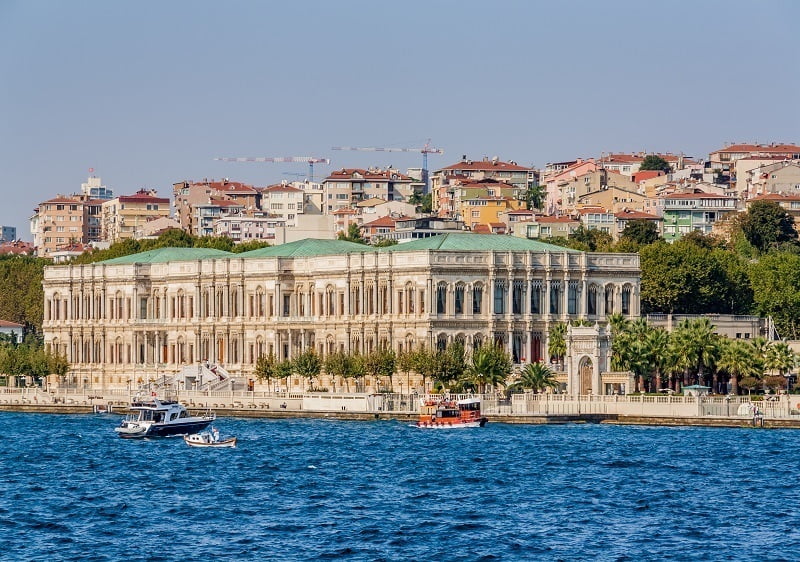
One of the best examples of a palace built by the late Ottoman dynasty is Ciragan Palace, located in Istanbul’s Besiktas district. It has been transformed into a Kempinski 5-star hotel, but it still serves as an architectural marvel and holds significant historical and cultural value. Anyone who travels to Istanbul must see this magnificent palace, which has become an icon of the city.
The palace’s neighborhood, Ceragan, got its name from the Persian word for torch, cerag, because the famous Ottoman celebrations, the Ciragan Festivals, took place in tulip gardens lit by torches at night. Armenian architect Nigogos Balyan was commissioned by Sultan Abdulmecit to build this palace. Loans acquired for the restructuring of Istanbul’s water system and the building of a new railway was used to construct the building on the European side of the Bosphorus, between the districts of Besiktas and Ortaköy. The duration of the project, in years, was somewhere around 12. It was the final palace of the Ottoman dynasty.
A fire started in the building’s central heating ducts in 1910, consuming the building’s interior but leaving the exterior walls intact. As a result of restoration and a new hotel addition in the 1990s, however, it is now a luxury hotel and a member of the Leading Hotels of the World, managed by Kempinski, one of the largest hotel management companies in the world. The most opulent hotel in Turkey is now located here. The other buildings in the complex are now being used as classrooms. A magnificent restaurant overlooking the Bosphorus can be found inside the palace section.
During the time of Sultan Abdulaziz, the last of the Ottoman sultans to build his own palace rather than rely on those of his forefathers, the Raan Palace was designed by Armenian palace architect Nigoayos Balyan and built by his sons Sarkis and Hagop Balyan between 1863 and 1867. Wood was used for the floor, ceiling, and roof, while marble of various colors was used for the exterior. There is a beautiful marble bridge that connects the palace to the Yldz Palace on the hill behind it. A high garden wall separates the palace from the rest of the world. Interior and exterior work on the palace continued until 1872. A few months after his dethroning, Sultan Abdulaziz was found dead in his beautiful palace on May 30, 1876. His nephew, Sultan Murad V, occupied the Raan Palace but only lasted 93 days as ruler. He was deposed by his brother Abdul Hamid II, who claimed he was mentally unstable, and he died on August 29, 1904, while under house arrest.
On November 14, 1909, the Ottoman Parliament was given permission by Sultan Mehmed V to meet in this building during the Second Constitutional Monarchy. However, on January 19, 1910, just two months later, the palace was completely destroyed by fire, with only the outer walls surviving. The garden, which was previously used as a football field by local club Beşiktaş J.K., was purchased in 1987 by a Japanese company, which restored the damaged palace and built a cutting-edge hotel complex in the adjacent garden. While the modern hotel building first opened its doors in 1990, the renovated palace didn’t welcome guests until 1992. It has been renovated into a five-star Kempinski hotel with plush rooms and two eateries for hotel guests.